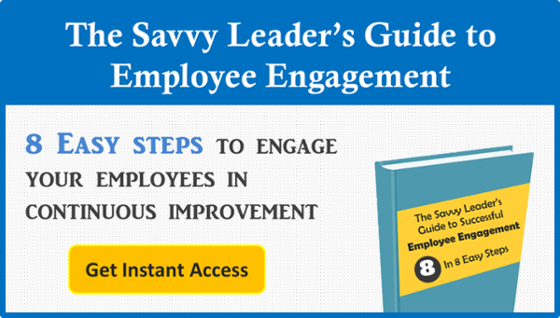 Visual management can take a number of forms. I have an example in my own kitchen. I love to cook and that means I use a lot of kosher salt. After years of grabbing the Morton’s box out of the pantry, only to discover that someone put it away almost empty, I changed my approach. When I buy salt, I immediately transfer it to a clear plastic container. Now every time I open the cabinet door, I know immediately how much salt I have on hand. It’s a simplistic form of visual management, but it exemplifies the concept.
Visual management can take a number of forms. I have an example in my own kitchen. I love to cook and that means I use a lot of kosher salt. After years of grabbing the Morton’s box out of the pantry, only to discover that someone put it away almost empty, I changed my approach. When I buy salt, I immediately transfer it to a clear plastic container. Now every time I open the cabinet door, I know immediately how much salt I have on hand. It’s a simplistic form of visual management, but it exemplifies the concept.
In business, there are a number of ways leaders practice visual management. Huddle boards are among the most popular. Typically, the boards contain slips of paper or post-it notes that represent opportunities for improvement. Teams gather around them, often on a daily basis, to receive feedback, list problems, and promote collaboration. These boards may include team metrics, graphs, charts, and visualized ideas all designed to keep improvement top of mind and promote creativity.
Practicing visual management with a physical board is the right idea, but practicing virtual visual management is significantly more effective. Here’s why.
The Benefits Aren’t Limited to the Building
The one big flaw in my visual salt management program is that if I get to the store and can’t remember if I need any, I’m out of luck. You don’t want your employees to be out of luck if they are working from another office, traveling, or telecommuting. With virtual visual management, people can stay apprised of what’s happening from wherever they happen to be.
Executives Get a More Complete View
While individual teams might be tightly focused on what’s happening in their department, executive leaders need visual management that covers the entire organization. With virtual visual management, executives can keep tabs on improvement throughout the company without the need to constantly visit each board.
Virtual Management is Active Management
Physical visual management boards are inanimate objects. They don’t do anything; they wait to be acted upon. Virtual visual management tools, on the other hand, have active features built-in. They supply notifications and alerts to remind people when tasks are due or let managers know when obligations are missed.
A More Complete Picture is Preserved
A physical management board gives you only a snap shot of the team’s improvement efforts. Once a change is complete, it is removed from the board and is no longer easily accessible. Otherwise, you’d have a pretty darn big board. Of course, space isn’t an issue when you are talking about virtual visual management. Software designed for this purpose can keep every detail about every project for as long as you use it. This gives people a way to learn from past improvements and build the organization’s repository of knowledge.
Strategic Alignment is Easier
The reason you practice visual management in the first place is to more efficiently and quickly achieve the goals of the company. Virtual visual management makes it much easier to ensure that every improvement project is aligned to the key objectives of the team, department, and company as a whole.
Taking your visual management board off of the wall and moving it into the cloud can go a long way toward accelerating the pace of positive change and getting you closer to the organization’s most important goals.



Add a Comment